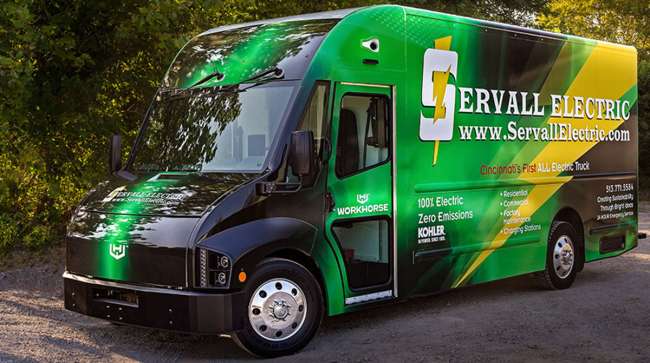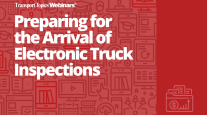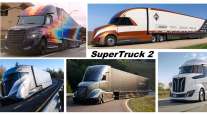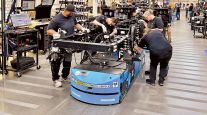Senior Reporter
NACFE Reports Van, Step Van Segments in Shape to Go Electric

[Stay on top of transportation news: Get TTNews in your inbox.]
It’s now practical for 100% of the commercial vans and step vans segment to switch to battery-electric powertrains from internal combustion engines, according to the North American Council for Freight Efficiency.
In its second market segment report from Run on Less — Electric (RoL-E), “Electric Trucks Have Arrived: The Use Case for Vans and Step Vans,” NACFE found electrification of all 4.1 million of those vehicles in the U.S. and Canada would result in the avoidance of about 43.5 million metric tons of CO2e (carbon dioxide equivalent) annually.
The three fleet-OEM van and step van pairs in RoL-E were DHL with a Lightning eMotors Ford Transit 350 HD, Purolator with a Motive EPIC and Servall Electric with a Workhorse C1000. NACFE noted electrifying the last mile is a key focus of many fleets.
NACFE Releases Vans & Step Vans Report: Run on Less – Electric data shows this market segment is 100% electrifiable. https://t.co/Gwc77yll33 pic.twitter.com/XsFJ9CLOyP — North American Council for Freight Efficiency (@NACFE_Freight) April 13, 2022
The study team identified four key findings from the report:
• E-commerce is leading the doubling — based on NACFE’s review of sales data from a variety of sources — of the huge van and step van market. Separately, Wards Intelligence reported 2021 U.S. retail sales in Classes 3-6 hit 571,246, of which Class 3 (10,001-14,000 gross vehicle weight rating) accounted for 379,561.
• Everything around electrifying smaller commercial vehicles is easier, and the total cost of ownership for this market segment is approaching parity with diesel- and gasoline-powered vehicles. Battery technology today meets the operational requirements for smaller commercial vehicles, especially in Classes 3-6.
• Electric vans and step vans improve driver attraction and retention. NACFE noted there also is a definite “cool” factor when it comes to interacting with the public.
NACFE Issues Vans & Step Vans Market Segment Report - https://t.co/rJ3wlVjuGq pic.twitter.com/v75J67Y2aI — North American Council for Freight Efficiency (@NACFE_Freight) April 12, 2022
• Transition to electric vans and step vans will be challenging, but planning can mitigate risks. Redesigning parking lots and depots to support electrification will take time, effort and money. “Fleets utilizing vans and step vans, especially in the parcel and package delivery space, currently expect the equipment to last 15 to 20 years and accumulate 300,000 to 400,000 miles in that timespan. Although manufacturers believe battery life can meet design lives of five, seven and 10 years depending on the OEM choices, long-term performance of electrified vehicles in this market segment still needs to be validated by fleets,” the report said.

Transport Topics' Seth Clevenger and Marissa Gamache take you through the process of determining North America’s largest 3PLs in the expanded Transport Topics Top 100 Logistics Companies list. Tune in above or by going to RoadSigns.TTNews.com.
In related news, Amazon.com Inc. CEO Andy Jassy, in the company’s annual shareholder letter, detailed what the boom in e-commerce and growth of routine frequent deliveries to consumers has meant for it operationally.
“For perspective, in 2004, we had seven fulfillment centers in the U.S. and four in other parts of the world, and we hadn’t yet added delivery stations, which connect our fulfillment and sortation centers to the last-mile delivery vans you see driving around your neighborhood,” he wrote. “Fast forward to the end of 2021, we had 253 fulfillment centers, 110 sortation centers and 467 delivery stations in North America, with an additional 157 fulfillment centers, 58 sortation centers and 588 delivery stations across the globe.”
The company expanded by 260,000 drivers worldwide, he noted, and its Amazon Air cargo fleet has more than 100 aircraft. “This has represented a capital investment of over $100 billion,” Jassy wrote.
Want more news? Listen to today's daily briefing below or go here for more info:




